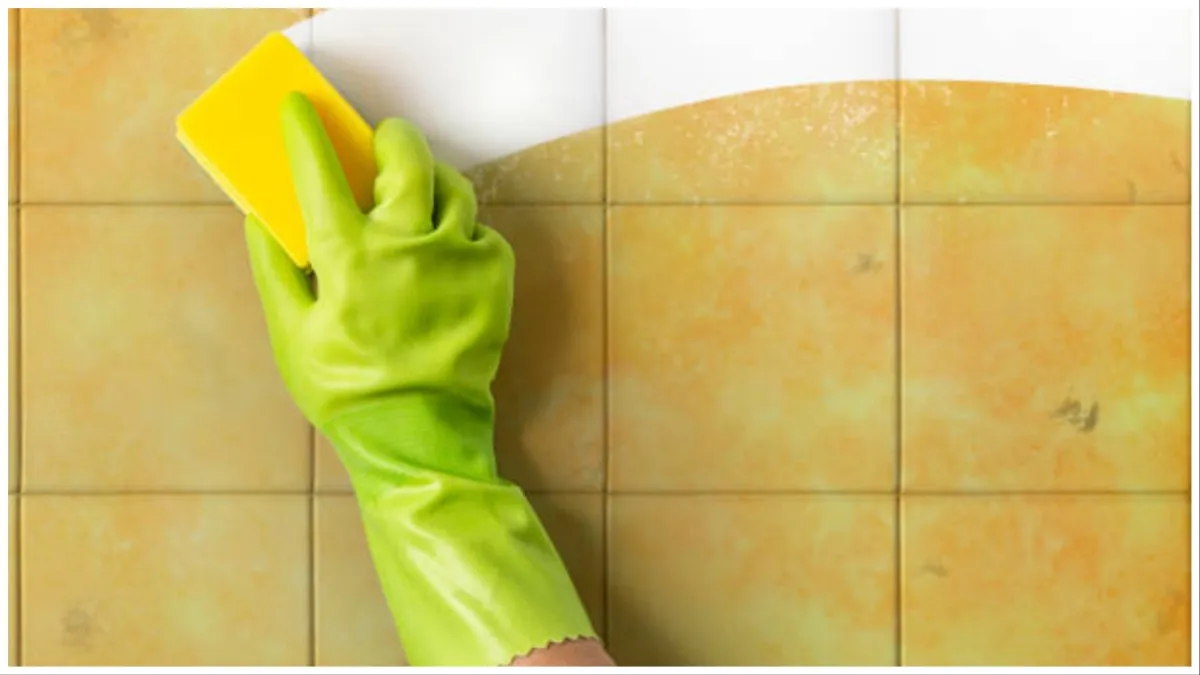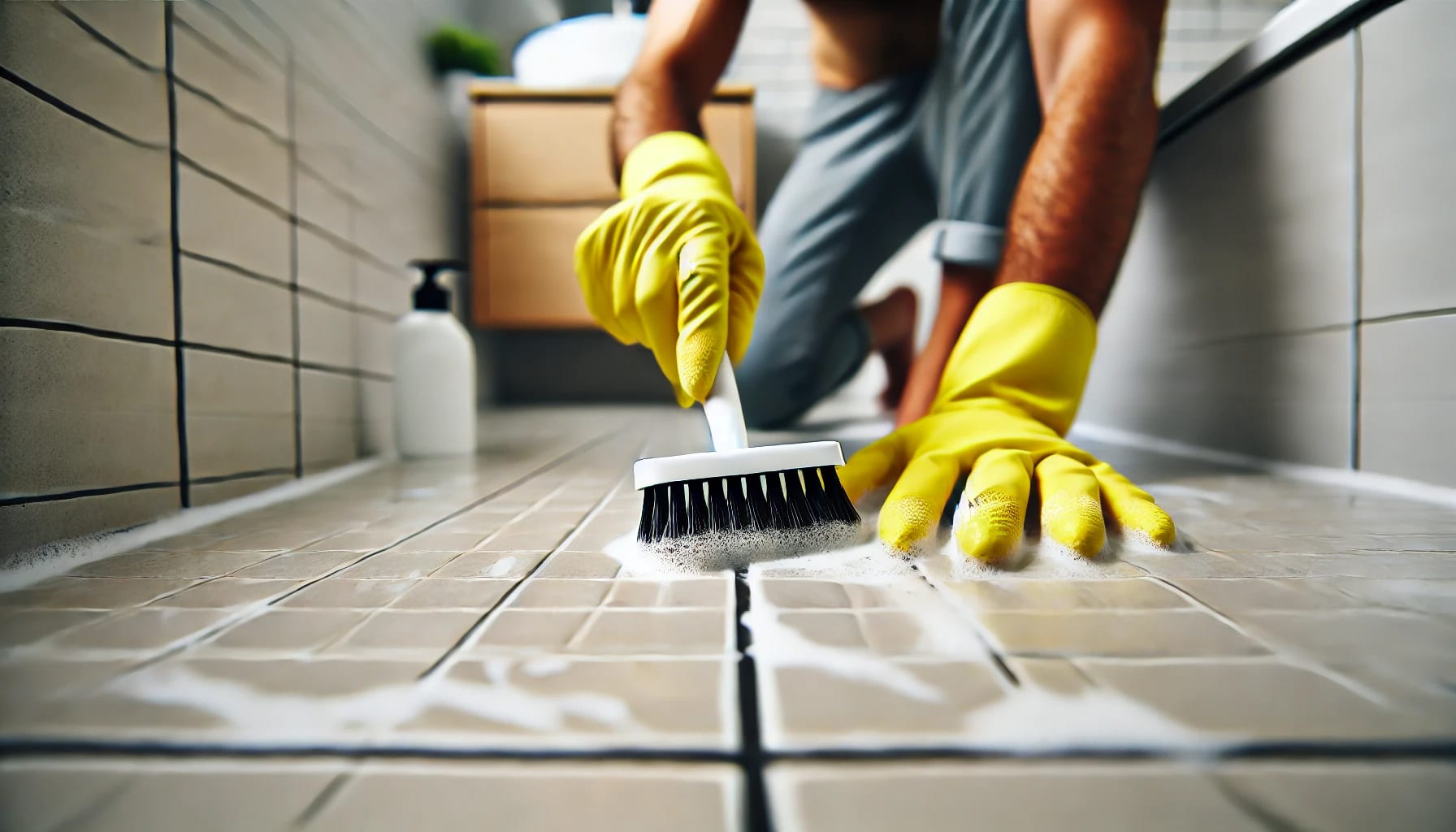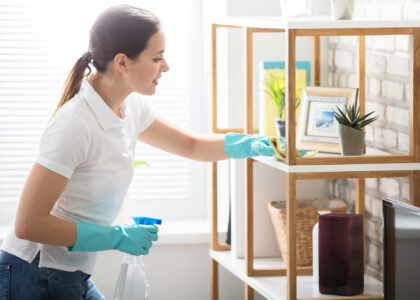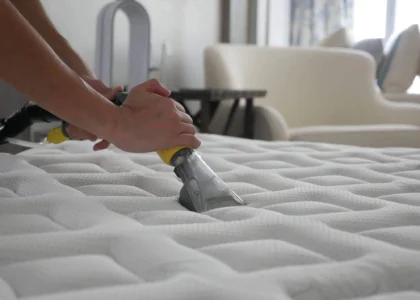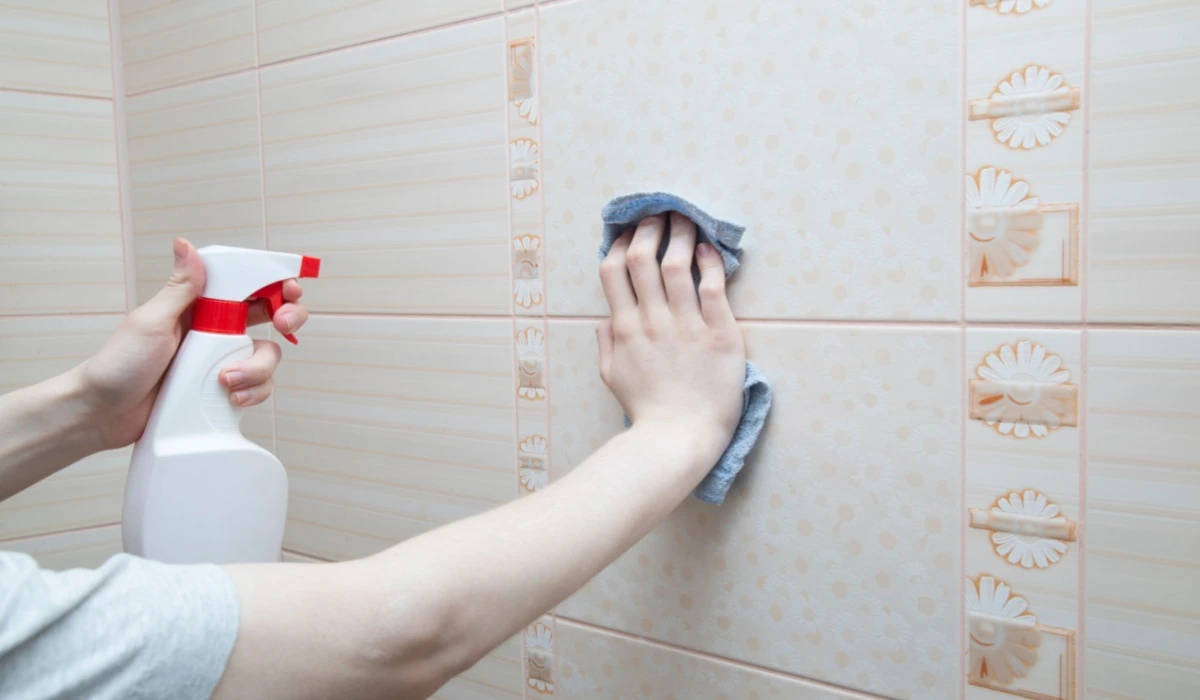
Bathroom tiles are essential for a clean and appealing bathroom aesthetic, but cleaning them can be a tedious and challenging task.
This article will give you advice on how to care for bathroom tiles, discuss common problems with them, and explain how a cleaning service such as Dusting Group can help.
Tackling Tough Stains and Mildew:
To address persistent stains or mildew on tile and grout, options include a 10% chlorine bleach solution (1 part bleach to 9 parts water), a white vinegar and water mixture (1 part vinegar to 3 parts water), or commercial tile and grout cleaners. Apply the chosen solution to the stain, allow it to sit, and then gently scrub. Using the correct chemical proportions is crucial to avoid weakening the grout. Always ensure adequate ventilation when using bleach and follow manufacturer’s instructions for commercial products.

